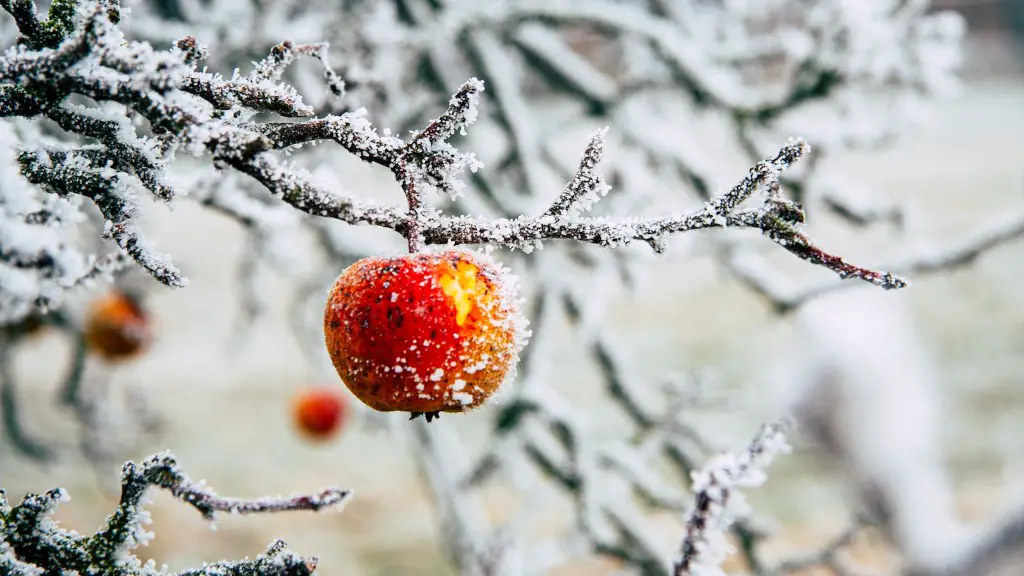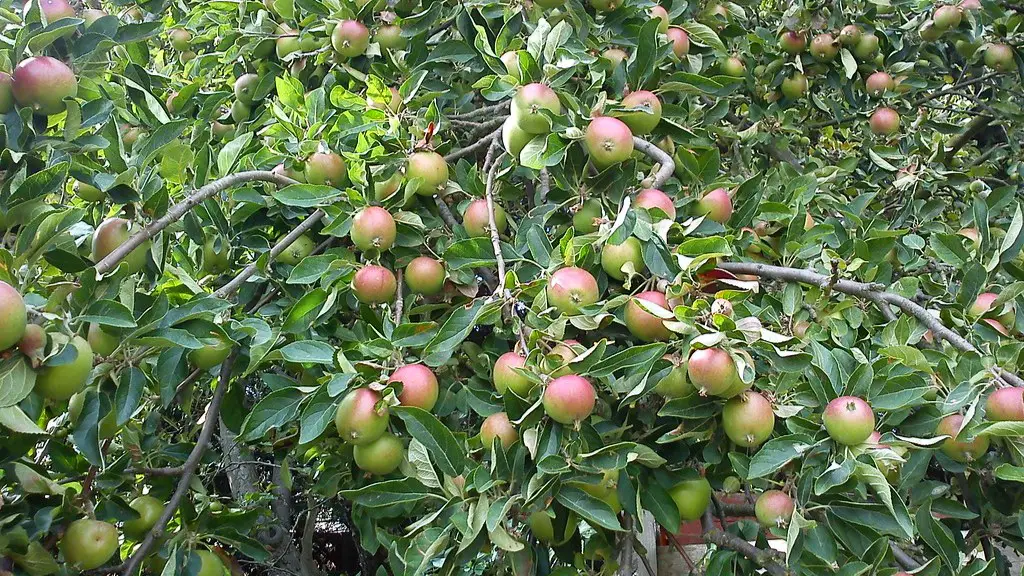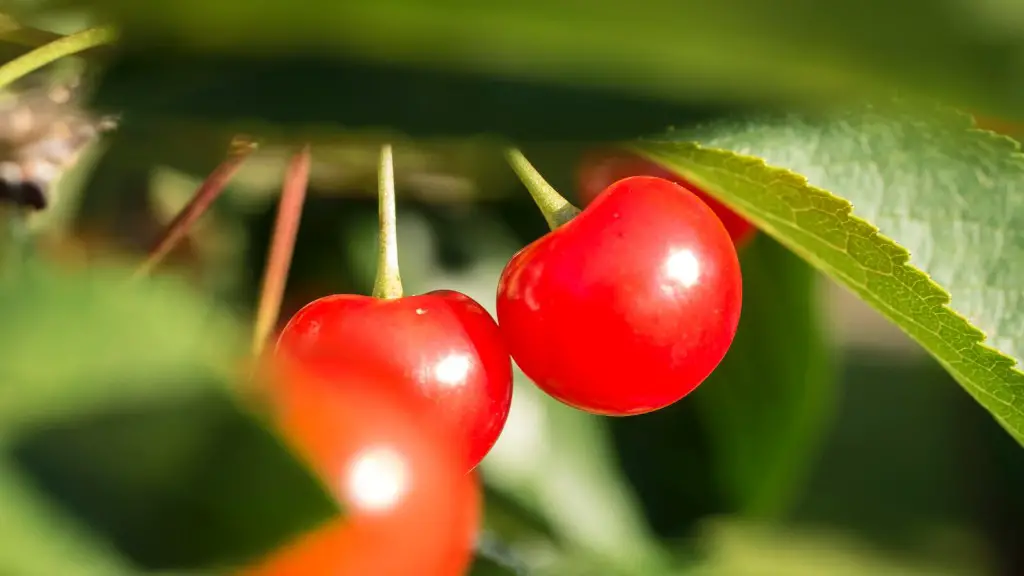Apple trees typically take four to five years to produce fruit.
There isn’t a definitive answer to this question as it depends on a number of different factors, such as the type of apple tree, the growing conditions, and the care it receives. However, it is generally said that an apple tree needs to be around three to five years old before it can produce fruit.
Do you need 2 apple trees to produce fruit?
Apples are self-unfruitful, meaning they need to cross-pollinate with another variety of apple tree in order to produce fruit. Plant at least two different apple tree varieties within 50 feet of one another for a good fruit set. Some apple varieties, such as Golden Delicious, will produce a crop without cross-pollination from a second variety.
The average bearing age of fruit trees is as follows; apple – 4 to 5 years, sour or tart cherry – 3 to 5 years, pear – 4 to 6 years, and plum – 3 to 5 years. This means that these are the average ages at which these fruit trees will begin to produce fruit. However, this is just an average, and some trees may produce fruit sooner or later than these ages.
How old are apple trees before they bloom
Fruit trees have to go through a few years of growth before they are able to flower and bear fruit. This is why dwarf and semi-dwarf apple trees may not flower and bear fruit for 3 to 5 years. Standard apple trees may not bear fruit for 5 to 10 years. But eventually, with the right care, all fruit trees will be able to produce fruit.
If you want to have a good apple harvest, it is important to have plenty of blossoms on your apple trees. The blooms are key to apple production, and if your tree doesn’t have many blossoms or they don’t stay on the tree for at least 10 days, you might not have many apples. The blossoms must be cross-pollinated by another variety of apple tree, or by a crabapple tree, to produce viable fruit.
What is the easiest apple tree to grow?
Fuji apples are the most popular eating apples in America and an excellent choice for a backyard apple tree! These easy to grow trees produce sizeable fruit and are sweet and juicy with a crisp bite. Although Fuji apples brown easily, they have a long shelf life compared to other varieties.
Fruit trees can be a great addition to any home, but they do have their down sides. Pest and disease problems, poor production, and nutrient deficiencies can all lead to disappointing yields. And growing apple trees is notoriously difficult. If you’re thinking of growing your own apples, be prepared for a challenge. With careful planning and attention to detail, however, it is possible to grow healthy, delicious apples at home.
Do you need 3 apple trees to produce fruit?
Most apple trees will benefit from having a pollinator, as this will help to transfer pollen and produce fruit. However, there are some apple trees that are self-fertile and do not require a pollinator.
Honeycrisp apples are a favorite for many people because of their sweetness and crispness. However, these apples can take two to eight years to produce their first fruit, depending on the size of the tree. Once the tree is matured, you should see fruit every year as long as you properly care for the tree.
Do apple trees produce apples the first year
It takes a few years for an apple tree to mature and start bearing fruit. The trees we have should start bearing fruit this year or next.
Apple trees are covered in apple blossoms in early May. In order for the blossoms to become apples, they must be cross-pollinated. This means that the pollen must travel from one flower to another before fertilization can occur.
What is the fastest growing fruit tree?
Plum trees are not only delicious, they also produce beautiful spring blossoms that help wildlife. At Keepers Fruit Nursery, we have a wide variety of plum trees to choose from, so you can find the perfect tree for your garden.
It takes a lot of time and patience to grow an apple tree from a seed. After the seed is planted, it takes a few weeks for it to sprout. The roots then grow down into the soil and the stem grows upward toward the light. Leaves begin to develop on the stem and the tree will not bear fruit until it is 5-8 years old. With time and care, you can enjoy fresh apples from your own tree!
How do you make an apple tree bear fruit faster
Here are some tips for faster growing trees:
1. Chill hours: The apple tree needs hundreds of chill hours per season to thrive and bear fruit.
2. Watering: Young trees require a lot of water – 2 inches of water every week.
3. Fertilizing: Mulch can help to keep the roots moist and improve fertility.
4. Pruning: Pruning young trees will help to encourage growth.
The Gravenstein apple tree is a great choice for apple growers who want to harvest a large quantity of apples in a short amount of time. These trees are among the largest apple trees and can produce a sizable crop within two to five years of planting. They are also relatively easy to care for and can thrive in most hardiness zones.
Why won’t my apple trees produce apples?
If you have an apple tree that isn’t bearing fruit, there are a few possible reasons. It may not be getting enough sun or water. Poor fruit production can also be caused by over-fertilizing.
Fuji apples are the sweetest apples you can find at the grocery store. On average, they have 15-18 grams of sugar. This is because they are mostly made up of water.
Final Words
There is no definitive answer to this question as it depends on a number of factors, including the type of apple tree, the growing conditions, and the care given to the tree. In general, however, most apple trees will begin to produce fruit when they are 3-5 years old.
While there is no definitive answer, on average, an apple tree starts bearing fruit three to four years after it is planted.




